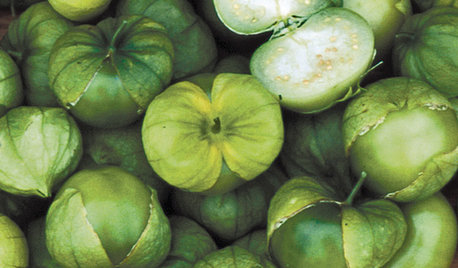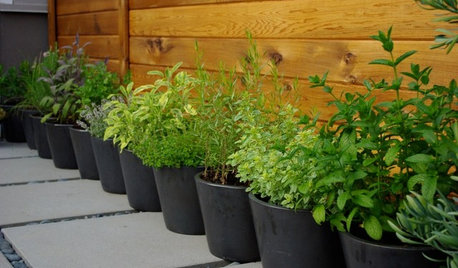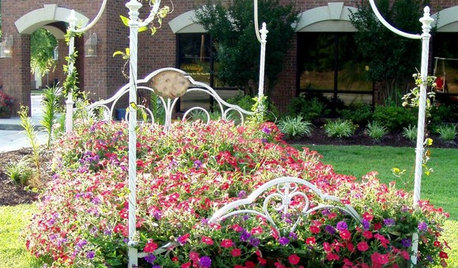Tomato support when growing many plants?
sujiwan_gw 6b MD/PA
16 years ago
Related Stories

EDIBLE GARDENSSummer Crops: How to Grow Tomatoes
Plant tomato seedlings in spring for one of the best tastes of summer, fresh from your backyard
Full Story
SUMMER FRUITS AND VEGETABLESSummer Crops: How to Grow Tomatillos
Grow this Mexican native for the freshest salsa verde — and for fewer problems than its tomato cousins
Full Story0

GARDENING FOR BUTTERFLIESGreat Design Plant: Columbine Grows Happily in Shade and Sun
Its ethereal beauty comes from complex forms and wide-ranging colors, but columbine’s benefits are highly attractive too
Full Story
GARDENING GUIDESGreat Design Plant: Grow Blueberries for Their Fruit and More
Eastern gardeners should consider growing blueberry plants for their delicious fruits, bee-friendly spring blooms and brilliant fall foliage
Full Story
EDIBLE GARDENSSummer Crops: How to Grow Squash
Almost foolproof and with cheerful flowers, squash comes in a wide range of varieties to plant in spring
Full Story
GARDENING GUIDES6 Ways to Grow Edibles in Small Places
No big backyard? Join in the grow-your-own fun with these small-space ideas for planting vegetables, fruits and herbs
Full Story
SUMMER GARDENINGHow to Grow Basil
Bright color, quick growth and endless uses for cooking make this summer annual a winner in the garden or a pot
Full Story
GARDENING GUIDESWhen and How to Plant a Tree, and Why You Should
Trees add beauty while benefiting the environment. Learn the right way to plant one
Full Story
LIFEKitchen Traditions: Tomato Season Meets a Family Legacy
Somewhere a Sicilian great-great-grandmother is smiling at a bowl of American-made sauce
Full Story
CONTAINER GARDENSYes, You Can Grow a Plant In That
You can upcycle your old typewriter, paint cans, tires and many more things into places for your plants
Full StorySponsored
More Discussions






bkyleh
miesenbacher
Related Professionals
Pottstown Landscape Contractors · Wilmington Landscape Contractors · Surprise Landscape Contractors · Clayton Landscape Contractors · Middle River Landscape Contractors · Tuscaloosa Landscape Contractors · Ames General Contractors · Dardenne Prairie General Contractors · DeRidder General Contractors · Las Cruces General Contractors · Valle Vista General Contractors · West Melbourne General Contractors · Huber Heights Decks, Patios & Outdoor Enclosures · Randolph Decks, Patios & Outdoor Enclosures · Surfside Decks, Patios & Outdoor Enclosuresdigdirt2
HoosierCheroKee
timmy1
spiced_ham
timmy1
johnny_tomato_seed
spiced_ham
aclum